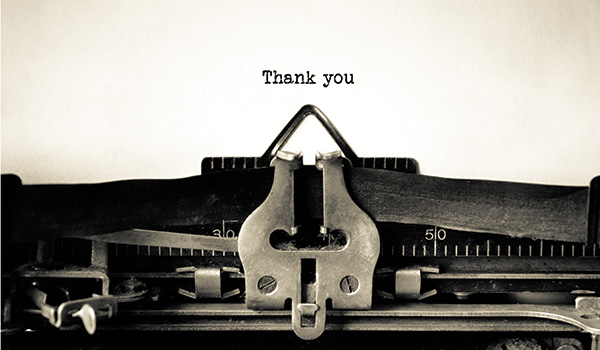
Stewardship: (noun) stew·ard·ship \ˈstü-ərd-ˌship\ — the activity or job of protecting and being responsible for something.
What exactly does stewardship mean to a nonprofit and its donors — and to the corporate executives sitting on the nonprofit boards they serve?
Aside from assuming custody of gifts, managing them and applying those resources responsibly toward the institution’s mission, nonprofits that steward gifts also steward the givers of those gifts.
For Valley organizations STARS and Child Crisis Arizona, donor relationships are at the forefront of stewardship. “We want to be in a relationship with our supporters,” says Anne Gray, director of advancement for STARS. The organization works to improve the lives of individuals with developmental and cognitive disabilities through skills training and employment. “We say, ‘Come have coffee with us,’ ‘Come make a smoothie with participants,’ ‘Come see and experience the good things your donation is doing in the community.’”
She stresses that the volunteer gifts of time and talent are appreciated equally. “Our philosophy is that we’re not a nonprofit with our hands out just saying, ‘We need this.’ We want to say, ‘This is who we are; this is the work we do. Come join on any level, and we’ll steward and appreciate you.’”
Torrie Taj, CEO of Child Crisis Arizona, employs a similar approach. “We offer an opportunity for donors to learn more about our work and see it first hand by inviting them to tour our facility.” Imparting information about the nonprofit’s progress and advocacy in child welfare issues is just as important. “We use several channels to inform donors: printed and electronic mail pieces, social media, and maintenance of a current website.”
Start with a Plan
Both nonprofits also practice the critical act of thanking and acknowledging donors for their support as they simultaneously develop deep and continuous relationships. But it all starts with a strategic donor communications/stewardship plan that includes insight about:
Managing the stewardship process — The development staff generally orchestrates the stewardship plan, working alongside board members. They determine the timing of thank-you letters and other publications, suggest invitations for donors to attend special events, and maintain a stewardship grid that tracks the ways different levels of donors will be “touched” throughout the year (hint: every touch point should not be an ask). The development staff often assigns personal thank-you phone calls and handwritten notes to be completed by board members. Or perhaps each board meeting begins with trustees making personal thank-you calls.
Thanking donors — Thought should be given to different methods of thanks for donors of varying levels. Who receives a personal phone call from the president, a note from the board chair, or lunch with the board member who has shepherded the relationship? Who gets the standard form letter or the thank-you packet with decals and a calendar? Who is invited to the CEO’s backyard barbecue? Who is honored with naming and signage opportunities?
Providing receipts — Quick response and receipt is crucial and should occur within 24 hours — or, at the very latest, 48 hours. No excuses.
Communicating with donors — How will the organization report back to donors regarding the impact of their investment throughout the year? The annual report? Exclusive communiques that keep top donors in the know? Personalized reports? Through direct interaction with board members? Will donors be invited to attend special recognition events? In what ways will the institution work to engage the donor with its mission?
Once the plan is implemented, how does the nonprofit measure the impact of its stewardship activities on fundraising success?
“Much of this can be defined by donor retention rates,” says Taj, “but that is the simple baseline measurement tool. At Child Crisis Arizona, we are very cognizant that donor stewardship is an ongoing process. We must always be connecting the donor back to our mission to offer opportunities to be involved so they feel a deep connection to us.”
Indeed, the power of positive interaction with donors cannot be overlooked — especially given that the impact of those strategic but heartfelt thank-yous and gestures may not be realized immediately. While it may take years to cultivate a substantial gift, moving donors through the relationship management cycle only heightens the potential for increased fundraising opportunities.
Donor Stewardship Best Practices
- Be sincere. Know what the donor has given before making the thank-you call or sending the letter. Let her know how her contribution is impacting the program/project she helped fund.
- Personalize. Even when sending a form letter, a quick, handwritten note jotted at the bottom can go a long way in making donors feel special and appreciated.
- Remember: Every gift is important. Small gifts now can lead to big gifts later. Even those who attend an event or buy a raffle ticket should be acknowledged.
- Be creative with communications and donor interaction. Share videos illustrating the impact of the nonprofit’s outreach, as well as vlogs from passionate staff or board members. Consider an “Ask Me Anything” event on social media. Host monthly coffee chats or organize exclusive events for special donor groups.
Behavioral research conducted by Dr. Monica Bartlett of Gonzaga University and Dr. Lisa Williams of the University of South Wales indicates that donors who are thanked may be more willing to give in the future.
Jan Halpin and Julie Iacobelli are principals with The Phoenix Philanthropy Group, an Arizona-based international consulting firm serving nonprofit organizations as well as institutional and individual philanthropists.














Speak Your Mind
You must be logged in to post a comment.